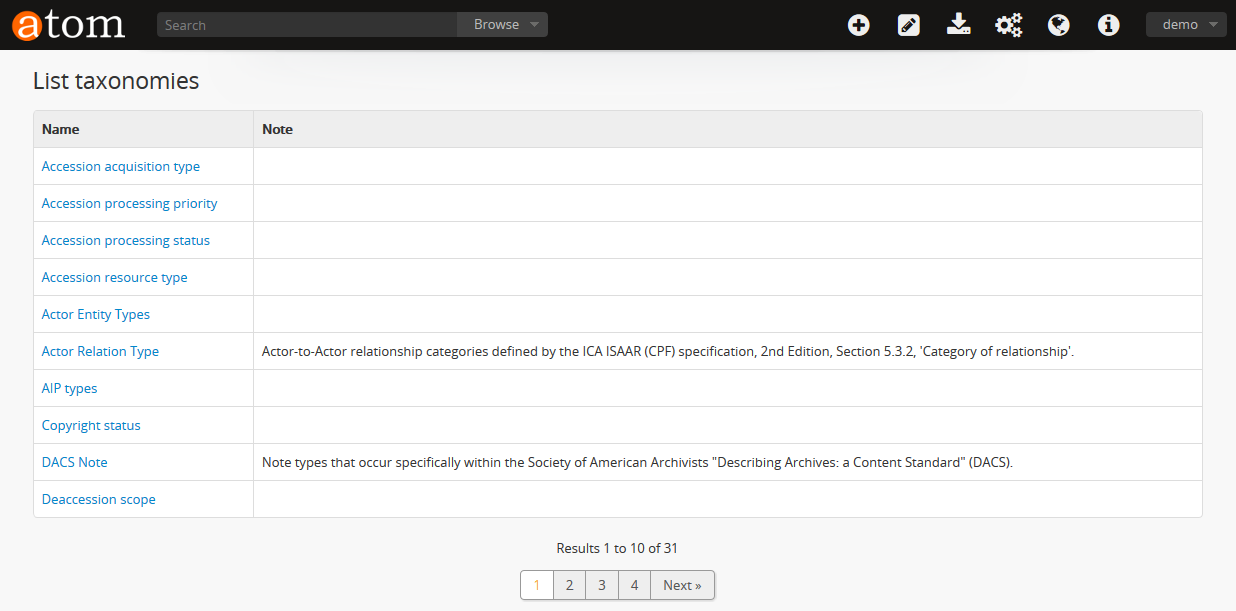General International Standard Archival Description 2nd Edition
README.md DACS (Describing Archives: A Content Standard) This site is maintained to facilitate an open and transparent revision process of DACS and to document a record of all changes made to the standard. The site includes the full text of the standard and a record of all proposed and accepted revisions since March 2016. DACS is an output-neutral set of rules for describing archives, personal papers, and manuscript collections, and can be applied to all material types.
DACS is compatible with ISAD(G): General International Standard Archival Description, 2nd ed. Shiv Kumar Batalvi Books In Punjabi. (International Council on Archives, 1999) and ISAAR(CPF): International Standard Archival Authority Records for Corporate Bodies, Persons and Families, 2nd ed.
Is now being circulated as a draft General International Standard Archival. Edition of the Manual (MAD2). Archival Description (MAD2) 2nd ed., 1990. • They enable description. • General International Standard Archival Description ( ISAD) - 2nd edition, 1999 • International Standard Archival Authority.

And Encoded Archival Context (EAC). The second edition consists. Describing Archives: A Content Standard. International Standard Archival Description. ICA INTERNATIONAL COUNCIL ON ARCHIVES CONSEIL INTERNATIONAL DES ARCHIVES ISAD(G): General International Standard Archival Description Second Edition.

(International Council on Archives, 2003). Converting to other formats The documentation on this site is written in Markdown. To convert to other formats, you can use the command-line application, which works on all operating systems.
Pandoc can be downloaded. Common commands: In general, the command is formatted pandoc FiletoConvert -o FileNameforResult Markdown to HTML: pandoc pandoc-example.markdown -o pandoc-example.html Markdown to DOCX: pandoc pandoc-example.markdown -o pandoc-example.docx Markdown to PDF: pandoc pandoc-example.markdown -o pandoc-example.pdf Revision Process The revision process begins when a formal proposal is submitted to TS-DACS from the community or a TS-DACS member. Proposals should include the following: • Brief description of the component of DACS to be changed as well as the proposed change. • Justification for the proposed change. The justification must include why the proposed change to DACS is beneficial to the American archival profession. • Impact of the proposed change. TS-DACS will also monitor changes to companion standards and evaluate whether DACS also needs revision to remain compatible.
Companion standards include, but are not limited to, EAD, EAC, RDA, MARC, and DCRM. Revision Procedures • TS-DACS receives and reviews a proposal.
If a revision is warranted, TS-DACS makes the proposal, including the revised text, widely available to the community for feedback. Feedback is collected on Github. • TS-DACS evaluates the community feedback and decides if the revision should proceed. Magic Music Studio Pro V7.3.10.1 Winall Incl Serial-internal. If yes, TS-DACS updates the proposed revision based on the community feedback and submits it to the Standards Committee for approval. • After receiving Standards Committee approval, TS-DACS submits the revision to SAA Council for final approval. • DACS is updated with the revised text on Github and the SAA website, and in publications if necessary. • TS-DACS notifies community of the revision through listservs.
###Using Github to track revisions TS-DACS began using Github in March 2016 to manage and document the revision process. Revisions are tracked in Github with the following procedure: • Create Github pull request with the proposed revision, including the justification and impact statements. • Collect community feedback on the pull request, either through an online form that creates Github issues or directly as Github issues. • Once the revision is approved, merge the pull request. • Generate HTML of the revised DACS for SAA’s website. Rapidshare Erasure Wonderland there.